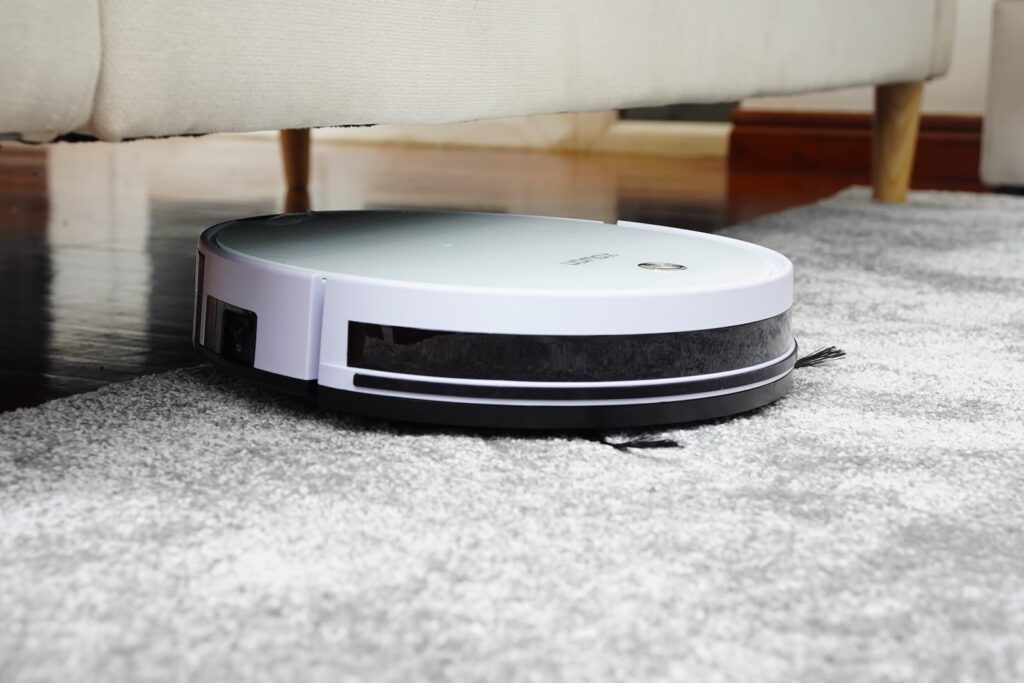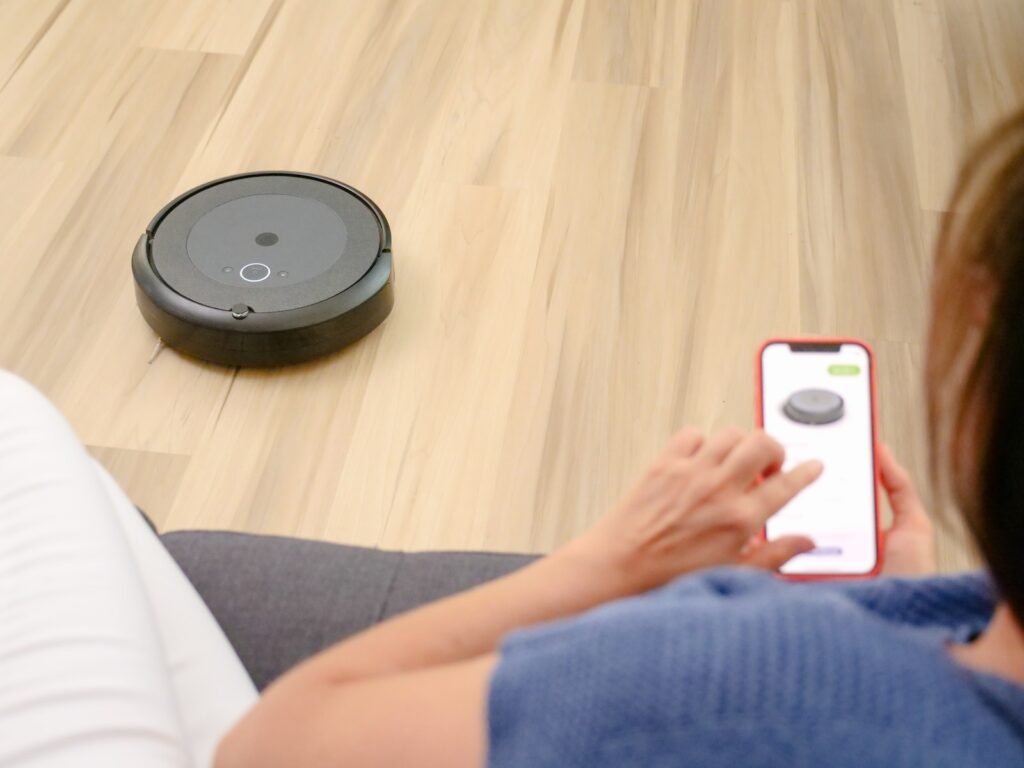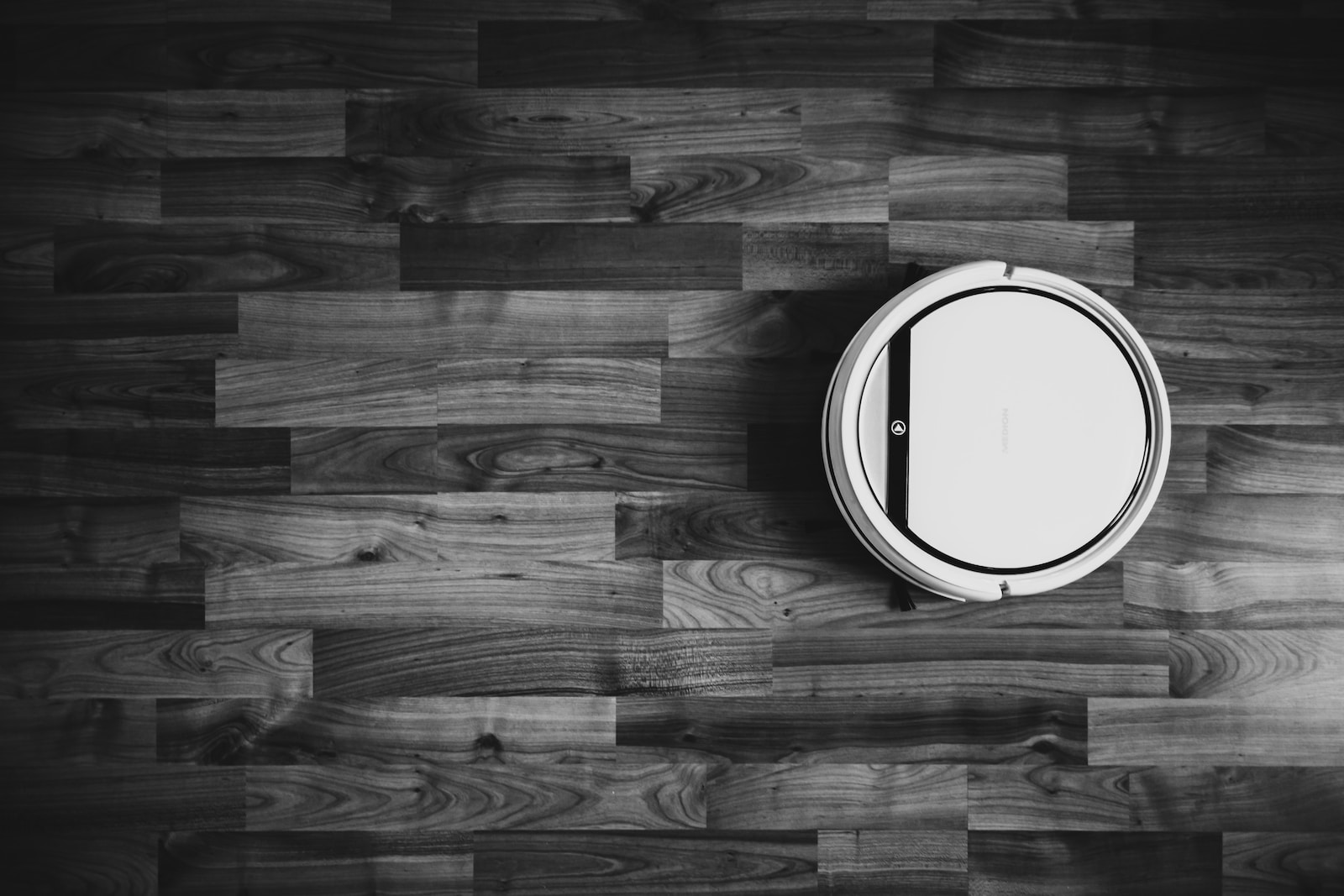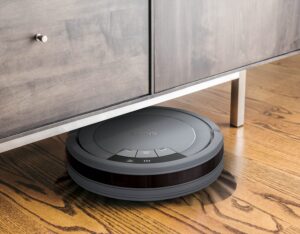The Rise of Robot Vacuum Cleaners
Cleaning has always been a necessary but time-consuming task for homeowners around the world. It’s no surprise then that there has been a steady increase in the popularity of robot vacuum cleaners over the years. According to Statista, the global market for robot vacuum cleaners is projected to reach 4.34 billion U.S dollars by 2023, up from 2.25 billion U.S dollars in 2018.
This rise in popularity can be attributed to a few factors, including advancements in technology that have made robot vacuums more efficient and affordable than ever before, as well as a growing demand for convenience and automation in our daily lives. Robot vacuums are designed to operate autonomously, freeing up time for users to focus on other activities or simply relax. Here we are going to do an overall review of robot vacuum cleaners.

The Benefits of Using Robot Vacuum Cleaners
There are several notable advantages to using a robot vacuum cleaner over traditional models. Firstly, they save users time and energy since they require minimal input beyond initial setup and occasional maintenance.
The devices are also compact and easy to store when not in use. Another benefit is their ability to clean hard-to-reach areas like under furniture or along edges with ease due to their low profile design.
Many models also come equipped with advanced sensors that help them navigate around obstacles without getting stuck or falling down stairs. Some models can be controlled remotely using smartphone apps or voice commands via smart home assistants like Amazon Alexa or Google Assistant.
The Drawbacks of Using Robot Vacuum Cleaners
While there are several benefits associated with using a robot vacuum cleaner, some drawbacks should be considered before making a purchase which is why we have this review of robot vacuum cleaners. One such drawback is their inability to match the deep-cleaning capabilities of traditional vacuums, especially on carpets or in high-traffic areas.
Another common issue with robot vacuums is that they can be quite loud, which can be a nuisance for some users. Additionally, the devices can struggle with cleaning certain surfaces like shag carpets or dark-colored floors that may interfere with their sensors.
The initial cost of purchasing a robot vacuum cleaner can be relatively high compared to traditional vacuums, although this is offset by the time and energy savings they provide over the long term. Overall, while there are pros and cons to using a robot vacuum cleaner, it’s clear that these devices are becoming an increasingly popular option for those seeking an efficient and convenient cleaning solution.
High-Level Overview of Robot Vacuum Cleaners
Explanation of how robot vacuum cleaners work
Robot vacuum cleaners use a combination of sensors, brushes, and suction power to clean floors automatically. They are equipped with various sensors that allow them to navigate around obstacles, sense drops or stairs, and map out the layout of a room.
They work by using these sensors to create a map of the room and then navigate around it to clean every corner. The brushes on robot vacuum cleaners are designed to loosen dirt and debris from carpets and hard surface floors as it moves across them.
The suction power then draws the dirt and debris into a dustbin that can be emptied when full. Some models even have HEPA filters that capture tiny particles like dust mites, pollen, or pet dander.
Comparison between traditional and robot vacuum cleaners
Traditional vacuum cleaners require manual operation, meaning you have to push them around while cleaning your floors. In contrast, robot vacuums are autonomous machines that work without any human intervention. A traditional vacuum cleaner may require multiple passes over an area before all the dirt is removed whereas robot vacuums will continue cleaning until they no longer detect any more dirt.
Another advantage of robot vacuums is their compact size which enables them to clean places where traditional vacuums cannot such as under furniture or in tight corners. However, traditional vacuums still offer greater suction power compared to their robotic counterparts which makes them more effective at removing stubborn pet hair or deep-seated dirt.
Discussion on the different types and models available in the market
There are several types of robot vacuum cleaners available depending on your needs. For instance, there are budget-friendly options that offer basic features such as navigation sensors but lack smart features like voice control or Wi-Fi connectivity. On the other hand, premium models come with advanced features like cleaning schedules, remote app control, or even camera navigation.
One of the most popular models in the market is the Roomba series by iRobot which features various models that cater to different budgets and preferences. Other notable brands include Ecovacs, Shark, and Eufy.
Some models even have advanced features such as self-emptying bins or mopping attachments that make them more versatile. Robot vacuum cleaners offer a more convenient way to clean your floors compared to traditional vacuums.
They come in different types and models with varying features depending on your needs and budget. Understanding how they work is crucial before deciding which model to purchase.
Features to Look for When Purchasing a Robot Vacuum Cleaner
When purchasing a robot vacuum cleaner, it is important to consider features that will work best for your specific needs. One feature to look for is strong suction power, which helps the vacuum pick up dirt and debris effectively, and battery life, as some models may have shorter battery life than others.
It is also crucial to consider the dustbin capacity, especially if you have pets or larger living spaces. Another feature that may be worth investing in is smart connectivity.
This allows you to control your robot vacuum cleaner through an app on your phone or with voice commands using virtual assistants such as Alexa or Google Home. Some models also offer mapping technology, which enables the robot vacuum cleaner to create a map of your home and navigate with more precision.
Make sure to consider any additional accessories or attachments that come with the robot vacuum cleaner. For example, some models may include extra brushes for different surfaces such as hardwood floors and carpets.
Our Review of Robot Vacuum Cleaners

Shark ION Robot Vacuum AV753, Wi Fi Connected, 120min Runtime, Works with Alexa, Multi Surface Cleaning , Grey
Price: $229.99

eufy by Anker, BoostIQ RoboVac 11S (Slim), Robot Vacuum Cleaner, Super-Thin, 1300Pa Strong Suction, Quiet, Self-Charging Robotic Vacuum Cleaner, Cleans Hard Floors to Medium-Pile Carpets
Price: $229.99

iRobot Roomba 694 Robot Vacuum-Wi-Fi Connectivity, Personalized Cleaning Recommendations, Works with Alexa, Good for Pet Hair, Carpets, Hard Floors, Self-Charging, Roomba 694
Price: $274.99
How To Set Up A Robot Vacuum Cleaner for Optimal Performance
Setting up your robot vacuum cleaner can be easy if you follow these simple steps:
1. First, make sure that all areas where you don’t want the robot to go are blocked off.
2. Charge the robot according to its instructions until it has a full charge.
3. Install any apps necessary onto your phone or other devices.
4. Next, determine whether manual scheduling options are appropriate based on available options within each model; some require manual setup while others allow automatic scheduling through Wi-Fi connectivity capabilities.
5. Finally test out and adjust any settings that need tweaking.
Best Practices for Maintaining a Robot Vacuum Cleaner
Robot vacuums can last years but only with proper maintenance techniques in place! Some tips include: – Regularly cleaning out both filters and dustbins
– Ensuring brushes are free from hair and debris – Cleaning off the sensors on the robot vacuum to ensure proper navigation
– Avoiding leaving cords, pet toys, or other obstacles on the floor that could damage the robot vacuum Overall, investing in a high-quality robot vacuum cleaner and properly maintaining it will provide long-term benefits to your household.
Rarely Known Small Details about Robot Vacuum Cleaners
The Science Behind How Robotic Vacuums Navigate Around Obstacles
A key part of what allows modern robot vacuums to navigate so effectively is their use of sensors. Most models will use several different types of sensors such as bumper sensors (to detect collisions), cliff detection sensors (to avoid falling down stairs), and infrared or laser sensors (to detect nearby objects).
Some high-end models even include camera-based navigation systems that allow them to take detailed images of their surroundings as they move through a space, enabling them to create more accurate maps and make better decisions about where to go next. All these sensor inputs are combined in real-time by the vacuum’s onboard computer system which then directs the movement of its wheels and brush heads based on what it detects in its environment.
Fun Facts About Robotic Vacuums That Most People Don’t Know
Did you know that some robot vacuums come with advanced features like mopping or UV sterilization? Or that there are models available specifically for pet owners that can pick up pet hair more effectively thanks to specialized brushes and filters?
Another interesting fact is that some robot vacuums have become popular among gamers for their ability to handle large amounts of small objects like dice or game pieces. Fans of tabletop RPGs or board games can program their vacuum to pick up all the pieces from a game board quickly and efficiently.
Some robot vacuums have even made it into space! In 2009, iRobot’s Roomba was sent on a mission to the International Space Station as part of an experiment on how robots might perform in zero-gravity environments.

Conclusion
Summary of Key Points Covered in the Review
Robot vacuum cleaners are becoming increasingly popular due to their convenience and ability to save time. While traditional vacuum cleaners require manual operation, robot vacuums are programmed to autonomously clean spaces without needing much human intervention.
They are designed with advanced technology that allows them to navigate around obstacles and clean hard-to-reach areas. In this review, we discussed the high-level overview of robot vacuum cleaners, including how they work and the types and models available in the market.
We also looked at niche subtopics such as features to look for when purchasing a robot vacuum cleaner, setting up your robot vacuum cleaner for optimal performance, and best practices for maintaining your device. We explored small details about robotic vacuums such as their history and evolution, the science behind how they navigate around obstacles, and fun facts about them that most people don’t know.
Recommendations on Whether or Not to Purchase a Robot Vacuum Cleaner Based on Individual Needs
So should you purchase a robot vacuum cleaner? The answer depends on your individual needs.
If you have a busy schedule or simply want to save time on household tasks, investing in a robot vacuum cleaner may be worth it. They’re great for keeping floors clean daily without too much hassle.
However, if you have pets that shed heavily or carpets with deep pile heights that require rigorous cleaning power, you may need a traditional vacuum cleaner with more suction power. Additionally, if you prefer having precise control over cleaning tasks or want to spot-clean specific areas manually, then a traditional vacuum may be better suited for your needs.
Overall though, robot vacuums offer an innovative way of keeping homes clean by using technology-driven solutions. As technology continues to advance at an incredible rate every year across all industries including home appliances like cleaning devices – we can only expect more advanced features and capabilities from robot vacuum cleaners in the future. Hopefully, you found this review of robot vacuum cleaners to be helpful!


5 thoughts on “Review of Robot Vacuum Cleaners: The Pros and Cons of an Automated Cleaning Solution”